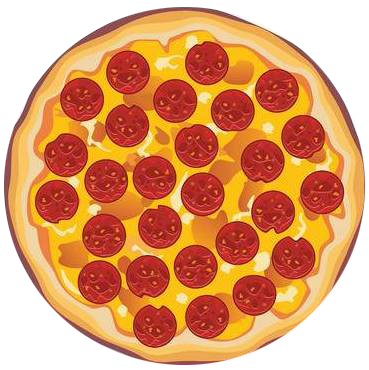To help us better understand mixed numbers and improper fractions, we like to imagine them as pizzas or legos.
Pick whichever you vibe with more:
CALCULATOR
—
Improper Fraction to Mixed Number Calculator
Mixed Number to Improper Fraction Calculator
Convert a

We have some questions for you! Help us out through this
INTRO
—
A mixed number tells us how many whole numbers and parts we have, and an improper fraction tells us how many total parts we have when the parts make up at least one whole.




 They're just two ways of saying the same thing 👯.
They're just two ways of saying the same thing 👯.
We can use an improper fraction and a mixed number to represent the same thing. For example, we can either say we have 2 whole pizzas and 3 slices of pizza, where 4 slices make up a whole:



Or we can say we have slices of pizza where 4 slices make up a whole:



Check out our or explore our and sections to learn more about improper fractions and mixed numbers and test your understanding.
Calculator
Lesson
Practice
You can also use the Quick Links menu on the left to jump to a section of your choice.
You can also use the Quick Links dropdown above to jump to a section of your choice.
KEY STEPS
—
How to Convert from Improper Fractions to Mixed Numbers
How to Convert from Mixed Numbers to Improper Fractions
Convert a
Step 1. Explain the fraction.
Step 2. Set up the conversion.
We want to split up our fraction into a whole number and the leftover fraction:
In pizza terms, this is like figuring out how many whole pizzas and leftover slices there are:Step 3. Find the whole number.
This is equal to the number of times the denominator goes into the numerator and tells us how many whole numbers we can make from the total number of equal parts we have.
In pizza terms, we're figuring out how many whole pizzas we can make:Step 4. Find the leftover/remainder.
In pizza terms, this is like finding the leftover slices after forming our whole pizzas:
Ex:
Step 5. Drop the plus sign.
Ex:
LESSON
— Converting Improper Fractions to Mixed Numbers
PRACTICE
— Converting Improper Fractions to Mixed Numbers
LESSON
— Converting Mixed Numbers to Improper Fractions
PRACTICE
— Converting Mixed Numbers to Improper Fractions
CONCLUSION
—
Leave Feedback